My last day in the field was great. The team went out early in the morning and everyone was very busy all day. While Elizabeth and Kirsten were getting close to the last frame point plots to be done, and while Verity was taking data and Catherine was measuring the thaw depths, I took some time to make my final observations along with some photos as well as finally getting to dissect a Cotton Grass tussock.
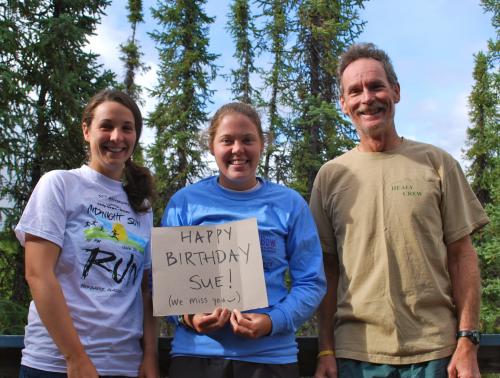
The warming experiments have been going on now for four years and even though it will take much more measurements over a longer period of time to be able to make more concrete conclusions, I feel that the tundra at the study site is changing in response to the warming treatments and beginning to show a shift in the ground as well as the vegetation. From being here this late in the season I have now seen the transition from a snow covered tundra to a much more productive and growing period.
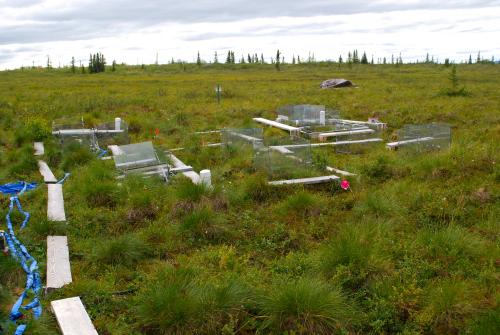
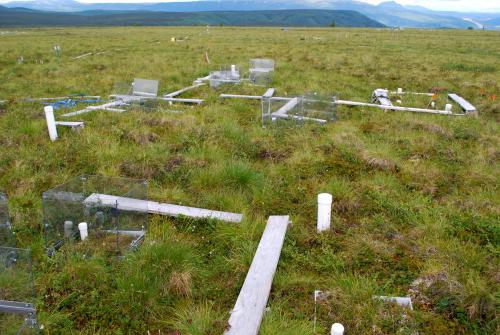
The winter warming treatments appear to be causing a change in the time and the amount that some of the plants are greening. The plants seem to be active and green earlier in the experimental plots and they seem to have more biomass than the plots on the control side. In addition, the ground is shifting more on the experimental side of the fence. There has been a noticeable sinking in the plots around Site A on the experimental plots that are much more pronounced than they were only a year ago. Not only the plots and the chambers are beginning to tilt and move, but the boardwalks around the plots are becoming uneven.
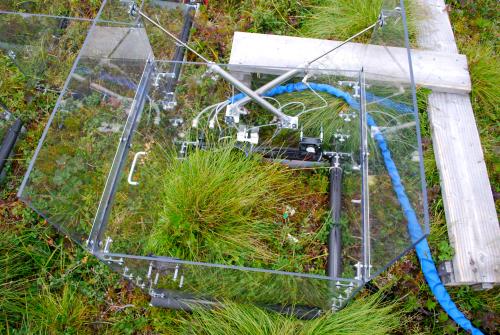
I do believe that as the tundra greens earlier and the plants enjoy a longer growing season the carbon intake will increase. Of course, the make up of the tundra plants will change as more shrubs and trees move into the area. The thawing of the permafrost layer will allow this to happen, but it will also open up much more of the active layer to decomposition. The increase in decomposition will result in more respiration and the release of carbon into the atmosphere. Will the respiration over take the photosynthesis?
In my mind I can imagine that this will happen. As the plants shift some will occupy new areas and some will die out, but there is only so much room for the plants to grow. I think they will be limited by space even though they will be supplied with more nutrients from the soil. The newly melted ground will supply liquid water that may or may not become too much for some of the species to deal with. As the ground continues to melt, the active layer will extend deeper and the amount of respiration will continue to increase until the permafrost completely melts or it stabilizes at a much lower depth. Only time and observations will show how and how fast these changes will take place.
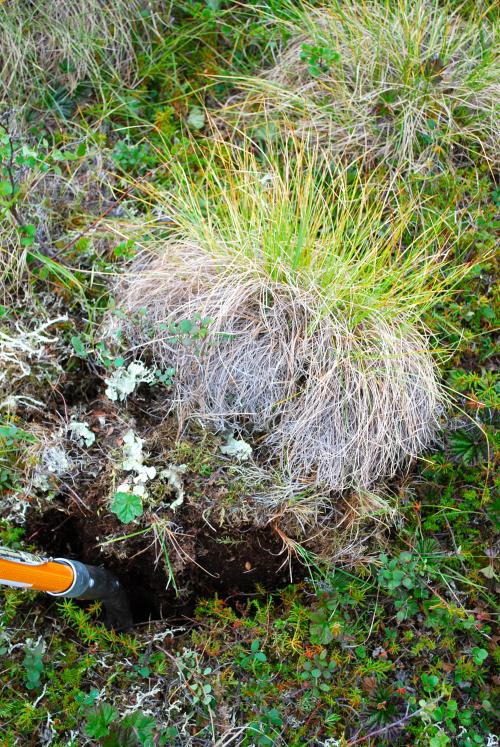
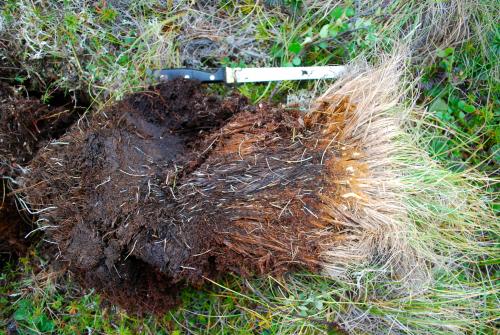
Even though I may not be back to this project there will be continuing research going on as well as new projects. There have been some connections made here with the communities in the area as well as Denali National Park. I hope that in the future, there will be local schools and students who visit the study site and take advantage of this learning experience that is right in their backyard. With the help of Dr. Natali and others, I hope to maintain a conversation for my students and an on-going set of decomposition data that can be compared to our Southern California climate as well as with other areas.
Again, I want to thank everyone involved with this process for their support, time, questions, comments, and just positive energy. This has been a wonderful growing experience for me and my students, and I am confident that these experiences will change the lives of kids and help us all to create a better future.
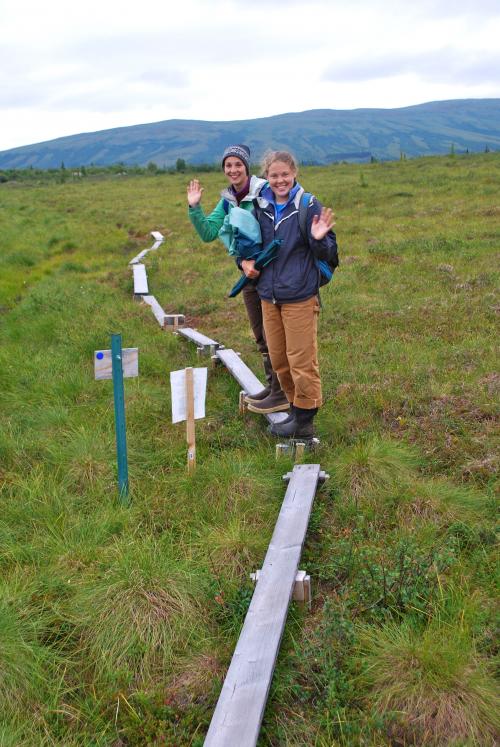


Comments